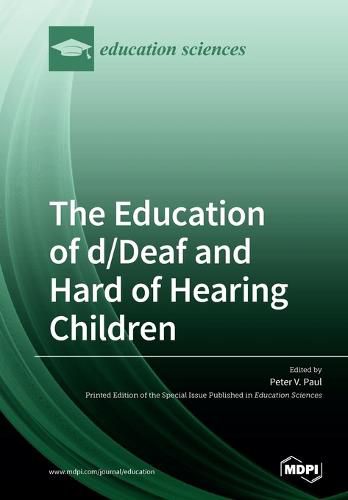Readings Newsletter
Become a Readings Member to make your shopping experience even easier.
Sign in or sign up for free!
You’re not far away from qualifying for FREE standard shipping within Australia
You’ve qualified for FREE standard shipping within Australia
The cart is loading…






This title is printed to order. This book may have been self-published. If so, we cannot guarantee the quality of the content. In the main most books will have gone through the editing process however some may not. We therefore suggest that you be aware of this before ordering this book. If in doubt check either the author or publisher’s details as we are unable to accept any returns unless they are faulty. Please contact us if you have any questions.
A significant number of d/Deaf and hard of hearing (d/Dhh) children and adolescents experience challenges in acquiring a functional level of English language and literacy skills in the United States (and elsewhere). To provide an understanding of this issue, this book explores the theoretical underpinnings and synthesizes major research findings. It also covers critical controversial areas such as the use of assistive hearing devices, language, and literacy assessments, and inclusion. Although the targeted population is children and adolescents who are d/Dhh, contributors found it necessary to apply our understanding of the development of English in other populations of struggling readers and writers such as children with language or literacy disabilities and those for whom English is not the home language. Collectively, this information should assist scholars in conducting further research and enable educators to develop general instructional guidelines and strategies to improve the language and literacy levels of d/Dhh students. It is clear that there is not a ‘one-size-fits-all’ concept, but, rather, research and instruction should be differentiated to meet the needs of d/Dhh students. It is our hope that this book stimulates further theorizing and research and, most importantly, offers evidence- and reason-based practices for improving language and literacy abilities of d/Dhh students.
$9.00 standard shipping within Australia
FREE standard shipping within Australia for orders over $100.00
Express & International shipping calculated at checkout
This title is printed to order. This book may have been self-published. If so, we cannot guarantee the quality of the content. In the main most books will have gone through the editing process however some may not. We therefore suggest that you be aware of this before ordering this book. If in doubt check either the author or publisher’s details as we are unable to accept any returns unless they are faulty. Please contact us if you have any questions.
A significant number of d/Deaf and hard of hearing (d/Dhh) children and adolescents experience challenges in acquiring a functional level of English language and literacy skills in the United States (and elsewhere). To provide an understanding of this issue, this book explores the theoretical underpinnings and synthesizes major research findings. It also covers critical controversial areas such as the use of assistive hearing devices, language, and literacy assessments, and inclusion. Although the targeted population is children and adolescents who are d/Dhh, contributors found it necessary to apply our understanding of the development of English in other populations of struggling readers and writers such as children with language or literacy disabilities and those for whom English is not the home language. Collectively, this information should assist scholars in conducting further research and enable educators to develop general instructional guidelines and strategies to improve the language and literacy levels of d/Dhh students. It is clear that there is not a ‘one-size-fits-all’ concept, but, rather, research and instruction should be differentiated to meet the needs of d/Dhh students. It is our hope that this book stimulates further theorizing and research and, most importantly, offers evidence- and reason-based practices for improving language and literacy abilities of d/Dhh students.